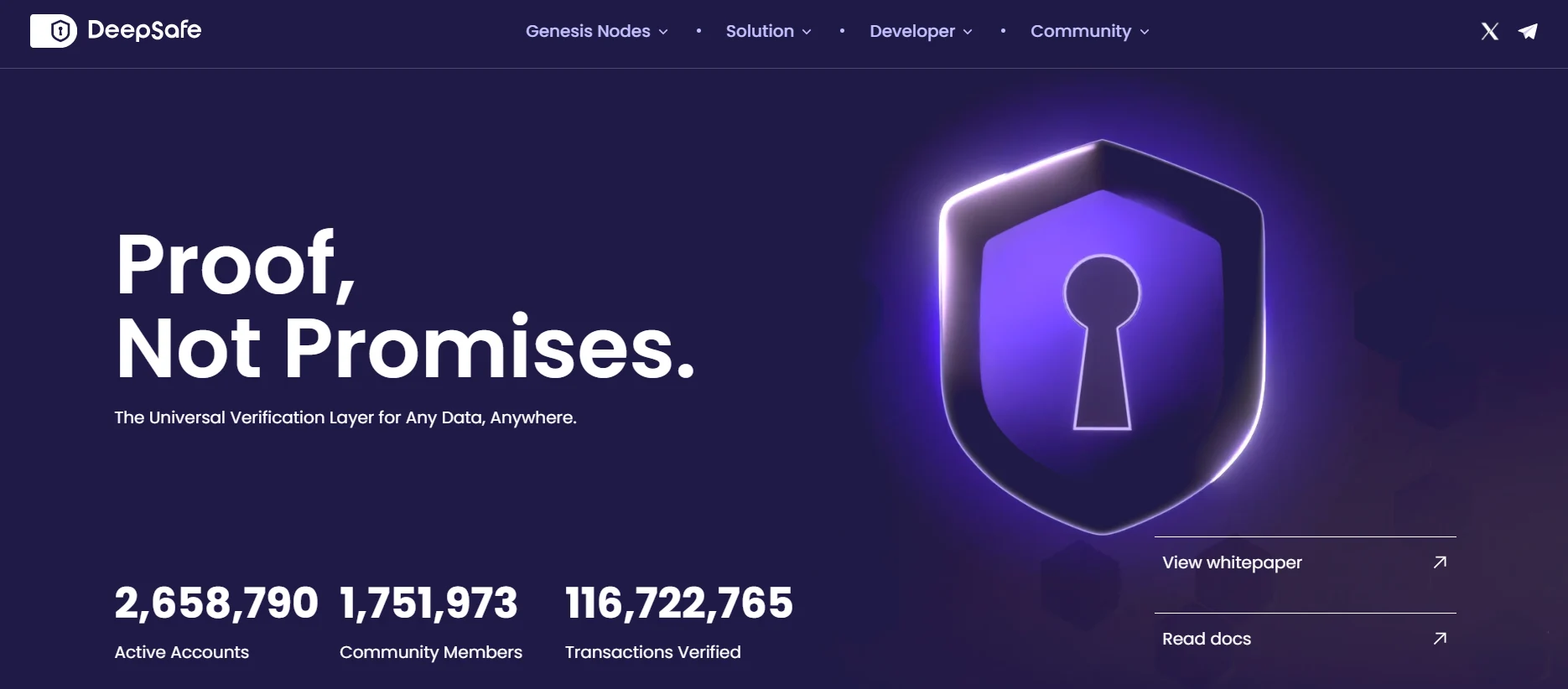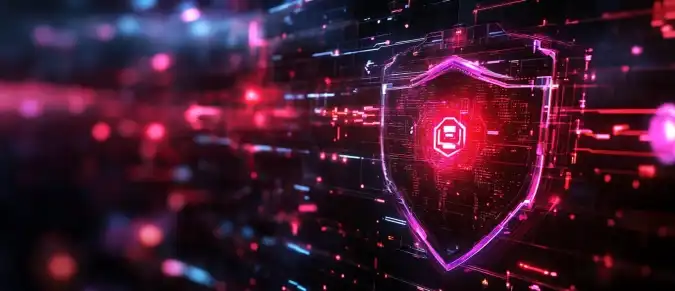DeepSafe — is a cryptographic verification network that creates a universal layer of trust across Web3, AI, and the real world. Through CRVA agents (Crypto Random Verification Agent), the project combines MPC, ZKP, TEE, and RingVRF technologies to verify the authenticity of data, messages, and computations both inside and outside blockchain systems. DeepSafe defines itself as a Verification Layer — an infrastructure capable of confirming the integrity of any information transmitted between networks, oracles, AI agents, and real-world devices. In 2025, the team announced a $3M seed round, the launch of a beta network, and open developer documentation, making it one of the most promising directions in decentralized verification.
- Purpose and positioning of DeepSafe
- Architecture and technologies
- Use cases and ecosystem
- Network participation and economic model
- Risks, limitations, and comparison

Purpose and positioning of DeepSafe
DeepSafe acts as a decentralized verification layer that addresses one of the core challenges of Web3 — the lack of trust when exchanging data across different systems. CRVA agents form the foundation of the network, enabling random and anonymous verification of events. This eliminates dependence on centralized validators and reduces the risk of attacks. Essentially, DeepSafe builds infrastructure where “proof of authenticity” becomes a fundamental function for blockchains, AI, and Web2 services. Such a model is particularly in demand in cross-chain interactions, IoT data validation, and artificial intelligence systems where guarantees of data integrity are essential.
The project aims to create a “universal Verification Layer” that can operate across various protocols and scenarios, including oracles, bridges, and fintech applications. Thus, DeepSafe positions itself as a foundational trust layer that can be embedded into any digital infrastructure — from AI inference pipelines to corporate APIs.
Architecture and technologies
The technological foundation of DeepSafe integrates four cryptographic components and the CRVA agent. The key technologies include:
- RingVRF — a verifiable randomness scheme that ensures anonymous validator selection;
- ZKP — zero-knowledge proofs that confirm computations without revealing data;
- MPC — multi-party computation, eliminating a single point of failure;
- TEE — trusted execution environment guaranteeing secure code execution at the hardware level.
The collaboration of these technologies forms a reliable verification environment. CRVA randomly selects participants, making the verification process anonymous while ensuring mathematically provable confirmation of events. This design prevents bias or manipulation, and the multilayer structure (TEE + MPC + ZKP + VRF) significantly increases network resilience. A staking and slashing mechanism is also implemented to maintain economic motivation for validators. DeepSafe plans to expand CRVA to multichain integrations, enabling cross-chain verification of transactions and off-chain messages.
Use cases and ecosystem
DeepSafe can be applied across many areas of the digital economy where verifiable authenticity is required. One key use case is the verification of AI agents and inference results, ensuring that computations are genuinely performed by the declared model and not tampered with. Another critical use case involves bridges and cross-chain transactions — DeepSafe acts as a neutral verifier that confirms the accuracy of data transmission between chains. In wallet ecosystems, the technology helps verify transaction signatures, preventing forgery and increasing user trust in both custodial and non-custodial environments.
The project also plays a significant role in oracle systems, ensuring the integrity of external data or API inputs. The same approach applies to Web2 and IoT solutions, where DeepSafe guarantees that real-world data remains unaltered during transmission. The ecosystem is built on an open architecture and supports developers with SDKs, smart contracts, and RPC parameters for the beta network. Teams can deploy nodes, participate in governance, and earn rewards for validation. Already, DeepSafe collaborates with multiple partners and is preparing a full mainnet with Owner/Voter roles and NFT Guardians confirming network participation. Altogether, this forms a comprehensive ecosystem where verification and trust become independent layers of the Web3 infrastructure.
Network participation and economic model
DeepSafe establishes a decentralized network in which every participant contributes to data verification and security. The structure is built around CRVA nodes that validate transactions and events through cryptographic randomness. The network operates without a single control point — decisions are distributed among participants. Staking tokens and penalty systems safeguard the ecosystem against malicious behavior. This approach ensures a balance between technical reliability and economic motivation, turning the verification process into a transparent, self-regulating mechanism. The table below presents the main elements that define the project’s network and economy:
| Element | Description | Purpose |
|---|---|---|
| CRVA Nodes | Verification nodes operating through RingVRF | Anonymous and random selection |
| Staking | Token collateral required to participate in the network | Economic incentive for honest behavior |
| Slashing | Penalty for incorrect or malicious verification | Deterrent mechanism against attacks |
| Owner/Voter Roles | Participants governing network parameters | Decentralized decision-making |
| Beta Network | Testing and debugging stage | Open participation for developers |
DeepSafe’s economic model is based on decentralized participation. Validators are rewarded for data verification, while dishonest actors lose their stake. This forms a sustainable system where economic and technical security reinforce each other. The team plans to introduce tokenomics that supports long-term network engagement and validator incentives.
Risks, limitations, and comparison
Despite its strong potential, DeepSafe faces several challenges. The use of TEE increases reliance on trusted hardware, and the complexity of ZKP and MPC can complicate scalability. At this early stage, open audits and public testing are crucial to prove the network’s reliability. Compared to classical oracle or AVS solutions, DeepSafe offers a broader range of functionality — from verifying AI results to validating real-world data streams. However, limited large-scale adoption still constrains its market impact. If the team successfully delivers its roadmap and implements a stable token economy, DeepSafe could evolve into a foundational “trust layer” for the next generation of Web3 infrastructure.





